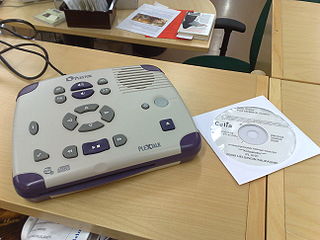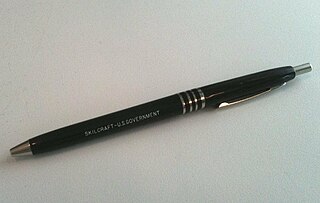 W
WA braille watch is a portable timepiece used by the blind or visually impaired to tell time. It is used by touching the dial and noticing the embossments. Both analog and digital versions are available. The analog versions have a protective glass or crystal cover that is flipped open when time needs to be read and the clock-hands are constructed to not be susceptible to movement at the mere touch of the finger that a blind person uses to observe their positions. In the digital form, the dots keep changing position as time changes. In this case, one must understand the Braille alphabet to read the watch.
 W
WA cecogram, also known as literature for the blind, is a letter or a parcel that contains documents or items intended for visually impaired persons. Cecograms can be sent or received by such persons, as well as by organisations that provide assistance to the visually impaired. Cecograms are either partially or entirely exempt from postage.
 W
WDigital accessible information system (DAISY) is a technical standard for digital audiobooks, periodicals, and computerized text. DAISY is designed to be a complete audio substitute for print material and is specifically designed for use by people with "print disabilities", including blindness, impaired vision, and dyslexia. Based on the MP3 and XML formats, the DAISY format has advanced features in addition to those of a traditional audio book. Users can search, place bookmarks, precisely navigate line by line, and regulate the speaking speed without distortion. DAISY also provides aurally accessible tables, references, and additional information. As a result, DAISY allows visually impaired listeners to navigate something as complex as an encyclopedia or textbook, otherwise impossible using conventional audio recordings.
 W
WFreedom Scientific is a company that makes accessibility products for computer users with low-vision, blindness, and learning disabilities. The company is a subsidiary of VFO Group. The software they create enables screen magnification, screen reading and use of refreshable Braille displays with modern computers. The company also offers services including training and accessibility consulting, including in-person services in major cities throughout the United States and other countries.
 W
WDigital Accessible Information System (DAISY) books can be heard on standalone DAISY players, computers using DAISY playback software, mobile phones, and MP3 players. DAISY books can be distributed on a CD/DVD, memory card or through the Internet.
 W
WThe Marrakesh VIP Treaty is a treaty on copyright adopted in Marrakesh, Morocco, on 27th June 2013. It achieved the deposit of 20 instruments of ratification or accession by eligible parties needed for entry into force on June 30, 2016. The Treaty date of entry into force is three months later, on September 30, 2016.
 W
WThe optophone is a device, used by the blind, that scans text and generates time-varying chords of tones to identify letters. It is one of the earliest known applications of sonification. Dr. Edmund Fournier d'Albe of Birmingham University invented the optophone in 1913, which used selenium photosensors to detect black print and convert it into an audible output which could be interpreted by a blind person. The Glasgow company, Barr and Stroud, participated in improving the resolution and usability of the instrument.
 W
WPhotovoltaic retinal prosthesis is a technology for restoring sight to patients blinded by degenerative retinal diseases, such as retinitis pigmentosa and age-related macular degeneration (AMD), when patients lose the 'image capturing' photoreceptors, but neurons in the 'image-processing' inner retinal layers are relatively well-preserved. This subretinal prosthesis is designed to restore a patients' sight by electrically stimulating the surviving inner retinal neurons, primarily the bipolar cells. Photovoltaic retinal implants are completely wireless and powered by near-infrared illumination (880nm) projected from the video goggles. Therefore, they do not require such complex surgical methods as needed for other retinal implants, which are powered via extraocular electronics connected to the retinal array by a trans-scleral cable. Optical activation of the photovoltaic pixels allows scaling the implants to thousands of electrodes.
 W
WSkilcraft, often stylized as SKILCRAFT, is the registered trade name of the National Industries for the Blind (NIB). Products made by Skilcraft are created largely by visually impaired or severely disabled individuals. Products bearing the Skilcraft brand are commonly used in United States federal government institutions, including the United States Postal Service. They are also commonly sold in U.S. military base exchanges and commissaries.
 W
WTactile paving is a system of textured ground surface indicators found on footpaths, stairs and railway station platforms, to assist pedestrians who are vision impaired.